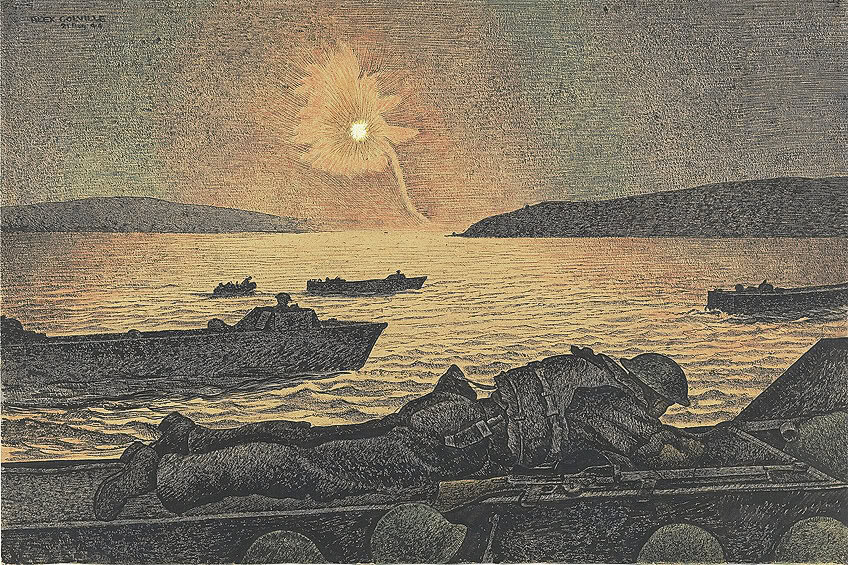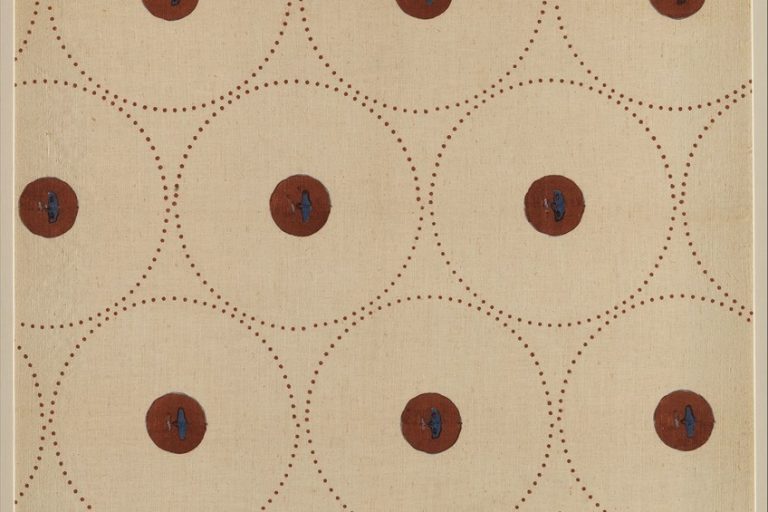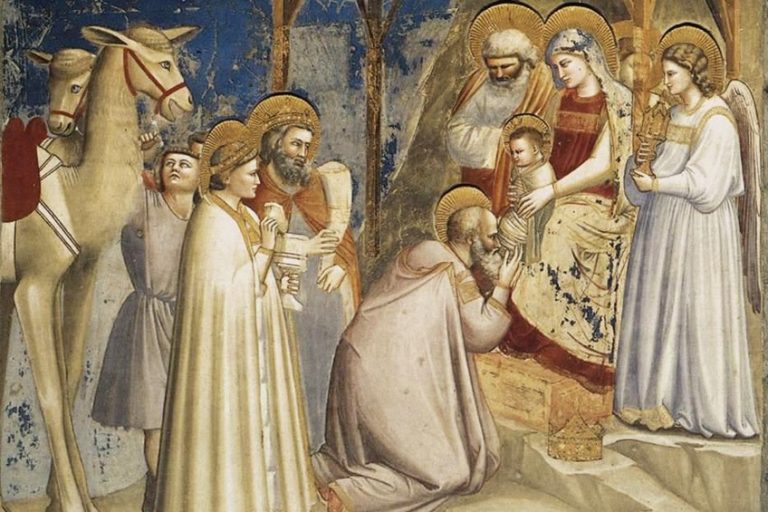Alex Colville – Master of Modern Realism
Alex Colville, a Canadian painter and printmaker, is renowned for his meticulously detailed and hauntingly realistic works that explore the complexities of human existence and the enigmatic beauty of everyday life. Born in 1920 in Toronto, Colville’s distinctive style emerged during the mid-20th century, influenced by his experiences as a war artist during World War II. His art often features ordinary people and animals in extraordinary, thought-provoking scenarios, inviting viewers to contemplate themes of isolation, mortality, and the passage of time. Colville’s mastery of composition, precise technique, and philosophical depth have established him as one of Canada’s most celebrated and iconic artists.
Key Takeaways
- Alex Colville was a Canadian painter known for his precise and psychologically rich depictions of everyday life.
- His education and experiences as a war artist significantly shaped his artistic development and thematic focus.
- Colville’s enduring influence on Canadian art is marked by national honors and continued relevance in contemporary discourse.
Early Life and Education
| Birth | August 24, 1920 |
| Death | July 16, 2013 |
| Place of Birth | Toronto, Ontario, Canada |
| Genre of Work | Painting and printmaking |
Alex Colville, a revered Canadian painter, established a reputation for meticulously detailed paintings that often depicted seemingly ordinary scenes imbued with deeper psychological and existential undercurrents. Born in Toronto, Ontario, Canada, Colville’s early life saw him resettling in Nova Scotia with his family. It was here that his artistic inclinations took root and were later honed through formal education. His academic pursuits led him to Mount Allison University, where from 1938 to 1942, he studied under influential Canadian artists and graduated with a Bachelor of Fine Arts.

His career was distinctively marked by his role as an official war artist during World War II, an experience that had a profound impact on his later work. Colville returned to Mount Allison University, this time serving as a faculty member and sharing his expertise with a new generation of artists. His adherence to a figurative style of painting, even during the rise of abstract art, set him apart from his contemporaries.
Through his artworks, Colville often explored the social and political issues of his time, reflecting a deep engagement with the Canadian landscape and psyche.
Colville’s contributions to Canadian art were widely recognized. He was honored as an Officer of the Order of Canada and later elevated to a Companion of the Order of Canada. His legacy persisted beyond his passing in 2013, with his work continuing to captivate and inspire discussions on human experience through the Canadian artistic lens.
Mount Allison University
Alex Colville was born in 1920 in Toronto, Ontario, and later moved to Amherst, Nova Scotia. His collegiate journey began in 1938 at Mount Allison University where he immersed himself in the study of fine arts. Under the guidance of influential Canadian Post-Impressionists, he refined his skills and emerged with a Bachelor of Fine Arts in 1942.
Influences and Motivations
While at Mount Allison University, he was notably influenced by teachers such as Stanley Royle and Sarah Hart. Outside the university, family life and the evolving cultural scenes of Canadian cities and rural areas played a substantial role in shaping his artistic direction.

Mature Period
Post-education, Colville’s style matured as he continued to live and work in the Maritimes, a region that became deeply entrenched in his identity. He served as a war artist during World War II, which had a significant impact on his subject matter and thematic focus.
Colville returned to Mount Allison University in a new role, as a professor, conveying his vast experiences to a new generation of artists.
Late Period and Death
Alex Colville continued to paint throughout his life, displaying a steadfast commitment to his figurative style until his death in 2013 in Wolfville, Nova Scotia. His approach remained consistent, steeped in the psychological complexity and representation of everyday life. Even during his later years, his art maintained a timeless quality, encapsulating the quiet intensity of the human experience.

War Years and Artistic Development
During the pivotal war years, Alex Colville served as an official war artist for the Canadian Army and later transformed these experiences into a distinctive artistic style that combined realist and magic realist elements.
Official War Artist
Alex Colville became an official war artist for the Canadian Army during the Second World War. Stationed in Europe, he was tasked with documenting the war through art. He produced detailed sketches and paintings, capturing the experiences of soldiers and scenes of combat. In Holland and Germany, Colville was on the front lines, translating the raw reality of war into poignant works of art. His presence at significant events such as the liberation of the Bergen-Belsen Concentration Camp left a profound impact on him and his work.

Post-War Transition
After the war, Colville returned to a life profoundly changed by his experiences. He turned to teaching, securing a position at Mount Allison University in Sackville, New Brunswick. In the post-war era, Colville’s style matured as he began to combine his wartime observations with a focus on daily life.
He developed a process that involved detailed planning before painting, often using photographs and camera aids to help compose his scenes.
Themes and Style
Colville’s paintings are known for their meticulous detail and the use of magic realism, a style that presents everyday scenes tinged with an eerie and mysterious undertone. His work often featured elements of the human experience against a backdrop of ordinary settings, imbued with a sense of psychological depth. Colville never fully detached from the influence of his war years; themes of conflict, survival, and the human condition pervade his art, distinguishing him from other realists of his time. His documentation of the war through art provides a stirring and immortal window into history and its effects on the human psyche.

Major Works and Exhibitions
Alex Colville’s prolific career is marked by an array of distinguished works and a presence in significant art exhibitions, both on national and international stages.
Notable Artworks
- Horse and Train: This evocative piece, emblematic of Colville’s thematic exploration of conflict between nature and technology, remains one of his most recognized paintings.
- To Prince Edward Island: Capturing a tender and personal moment, this painting underscores Colville’s connection to the landscapes and sentiments of Atlantic Canada.
National Recognition
- Order of Canada: Colville was made a Companion of the Order of Canada in 1982, a testament to his impact on the Canadian art scene.
- National Gallery of Canada: His works are a mainstay in this prestigious institution, reinforcing his status as one of Canada’s most esteemed artists.
- Art Gallery of Ontario: Located in Toronto, this gallery hosted a major retrospective of Colville’s work in 1983, celebrating his artistic contributions on a grand scale.
- Art Gallery of Nova Scotia: Based in Nova Scotia, a region that greatly influenced Colville’s work, this gallery houses some of his notable paintings.
International Acclaim
- Venice Biennale: Colville’s participation in this illustrious event marked a pivotal point in his career, expanding his recognition well beyond Canadian borders.
- Exhibitions: His works featured in international venues like the Tate Gallery in London, securing his place in the global arts community.

Legacy and Influence
Alex Colville’s contributions extend beyond his artwork, having a profound effect on Canadian culture and art education. His legacy is shaped by his role as an educator, his impact on Canadian art, and the lasting symbols he created which resonate with a deep sense of identity and place.
Teaching and Mentoring
Alex Colville imparted his knowledge and passion for the arts during his time as a faculty member at Acadia University. He influenced a generation of artists through both formal education and personal mentorship, establishing a standard of rigorous practice and thoughtful creation in the arts. His tenure at Acadia was not just a job but a continuation of his own learning and exploration of art which he shared with his students.

Impact on Canadian Art
As one of the most recognized Canadian painters, Alex Colville significantly shaped the Canadian art world. His distinct style combined precision with a narrative depth that has been credited with elevating the status of Canadian art internationally. His works are often associated with iconic Canadian imagery and touch upon universal themes through the lens of personal and national experience.
Notable contemporaries such as Miller Brittain and Sarah Hart were among the artists in Canada who shared the landscape of Canadian art with Colville.
Legacy of Alex Colville
Colville’s legacy extends to multiple public and cultural institutions. Owens Art Gallery and Colville House are integral parts of the arts community, preserving his work and influence. Notably, Colville was appointed a Companion of the Order of Canada, underscoring his significant contribution to the arts in Canada and the pride Canadians have in his work. Colville’s paintings continue to serve as a touchstone in the Canadian collective memory, reminding us of our shared history and identity.

Alex Colville’s artistic legacy transcends mere representation, delving into the profound depths of human existence and the universal themes that bind us all. His meticulous attention to detail, evocative compositions, and exploration of the ordinary’s profoundness have left an indelible mark on the art world. Colville’s ability to capture the essence of life’s complexities and evoke contemplation in his viewers ensures his enduring relevance and status as a visionary artist of the 20th century.
Frequently Asked Questions
What Are the Characteristics of Alex Colville’s Artistic Style?
Alex Colville’s art is characterized by meticulous detail, precision in composition, and a clarity that borders on hyperrealism. His work often contains an underlying sense of tension or unease, portraying ordinary scenes that suggest deeper, sometimes darker narratives.
How Has Alex Colville’s Work Influenced Contemporary Canadian Art?
Colville’s distinctive approach to painting has had a significant impact on contemporary Canadian art, encouraging a narrative and figurative style in a landscape often dominated by abstract and conceptual art. His works, which depict commonplace subjects imbued with complex emotional and psychological undertones, have inspired Canadian artists to explore themes of everyday life with a similar level of depth and attentiveness.
How Has Alex Colville Contributed to the Development of Hyperrealism in Canadian Art?
Alex Colville is regarded as a pioneer in Canadian art for his contributions to the hyperrealism movement. By blending photographic precision with existential themes, Colville’s artwork challenges the viewer’s perception of reality and has influenced a generation of artists to pursue a similar meticulousness and clarity in their representation of the real world.
Isabella studied at the University of Cape Town in South Africa and graduated with a Bachelor of Arts majoring in English Literature & Language and Psychology. Throughout her undergraduate years, she took Art History as an additional subject and absolutely loved it. Building on from her art history knowledge that began in high school, art has always been a particular area of fascination for her. From learning about artworks previously unknown to her, or sharpening her existing understanding of specific works, the ability to continue learning within this interesting sphere excites her greatly.
Her focal points of interest in art history encompass profiling specific artists and art movements, as it is these areas where she is able to really dig deep into the rich narrative of the art world. Additionally, she particularly enjoys exploring the different artistic styles of the 20th century, as well as the important impact that female artists have had on the development of art history.
Learn more about Isabella Meyer and the Art in Context Team.
Cite this Article
Isabella, Meyer, “Alex Colville – Master of Modern Realism.” Art in Context. May 21, 2024. URL: https://artincontext.org/alex-colville/
Meyer, I. (2024, 21 May). Alex Colville – Master of Modern Realism. Art in Context. https://artincontext.org/alex-colville/
Meyer, Isabella. “Alex Colville – Master of Modern Realism.” Art in Context, May 21, 2024. https://artincontext.org/alex-colville/.











